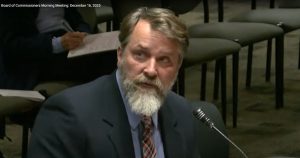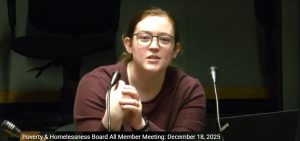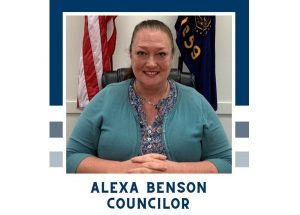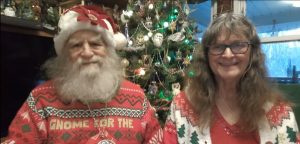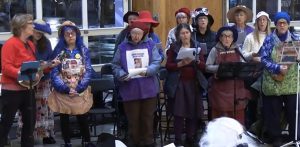EWEB, Y hope to demonstrate newest emergency water station this year
5 min read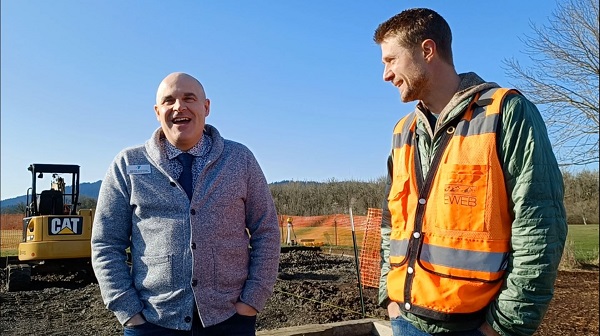
EWEB prepares its latest emergency water distribution station behind the new YMCA in South Eugene. On March 7:
Nathan Endicott (EWEB project manager): You can get a little flavor from just the ice storm of the disruption that it caused to all of us. And so that’s a big wake-up call. The Cascadia subduction zone earthquake is estimated to be around 9.0 (on the Richter scale). Our community has not seen that, and so it’s going to be much, much worse, so this is very practical if we had an earthquake of that size.
[00:00:29] So people would be walking and they’d be filling their jugs and so having this in place—built to those seismic standards—helps us feel a little bit more comfortable and confident that we could serve water during an emergency.
[00:00:40] John Q: Community members will enter the parking lot behind the YMCA and proceed to the southwest corner. Nathan Endicott described the work in progress:
[00:00:49] Nathan Endicott (EWEB): The well’s been drilled and so that’s visible right over there. There’s the casing that’s above grade, and right now we’re building a concrete slab where there will be a couple enclosures that sit to help then distribute all of the above-ground piping.
[00:01:02] The slab is designed seismically. There’s no seismic standards for a well itself, but everything’s built to a more robust standard—so the well casing is thicker; we’ve gone deeper, it’s around 280 feet deep. There’s different measures we’ve done with the well itself to ensure that it would better withstand an earthquake.
[00:01:19] John Q: Neighborhood residents can help. The water distribution pipes are assembled with help from CERTs: Community Emergency Response Teams. CERTs are neighbors who attend training, then practice setting up the water station.
[00:01:31] In an emergency, CERTs will help staff seven stations throughout the city. This South Eugene site is the sixth to be built; the last one will be at Churchill. Nathan Endicott described how it works:
[00:01:44] Nathan Endicott (EWEB): It’s a piping system that has hosed outlets and a person is able to use a valve to fill a jug. And you could go to the website, there’s an assembly instruction video that shows exactly how to do this. Then also there’s links there to YouTube and you can find these videos.
[00:01:58] This site, we’re hoping to have everything ready to go by end of summer. And at that point, we’d be doing possibly a community demonstration and also welcoming the CERTs out. They’re awesome. The CERTs have been a good partner too, with us to exercise these systems and be prepared to with us on the assembly aspect and distribution of water.
[00:02:18] John Q: The YMCA is also ready to serve the community after the earthquake.
[00:02:25] Brian Steffen (YMCA executive director): If there was a huge earthquake and people had homes that were damaged and not usable, hundreds of people could be sheltered at the Y in the gymnasium.
[00:02:35] We also have multiple locker room settings where people can have showers. And we have three different kitchen spaces at the new Y where we can provide meals and nutrition for folks.
[00:02:48] There’s also the ability to have it be an emergency response hub where first responders, emergency responders could have a place to come together that’s still operational and functional.
[00:03:02] John Q: That’s because the new Y was built to survive a big earthquake.
[00:03:06] Brian Steffen (YMCA): The new YMCA is built to the highest earthquake standards and that means it’s designed to be immediately usable if there was a significant seismic event.
[00:03:18] So it has its own generator, the steel, the concrete are really upsized. So it could be a triage center, a shelter, it has multiple kitchens and locker rooms.
[00:03:29] So we love this partnership with EWEB because a community that’s prepared helps reduce the fear and the uncertainty with a disaster. And so having partners come together where there’s a place of shelter and a source of water, just makes sense.
[00:03:46] John Q: That partnership represents a culture of local leadership focused on providing more services at lower costs.
[00:03:54] Brian Steffen (YMCA): And it really speaks to community partners coming together to think about long-term strategies to address the needs within the community.
[00:04:04] When you are building an existing project and you can build in the electrical components, the backup generator components, to provide a secondary water source for a community, it’s a much more efficient use of public dollars, philanthropic dollars, shared infrastructure with parking lots, and again, power.
[00:04:23] So it speaks to organizations who are forward-thinking and trying to look for ways to meet needs while also being as efficient in their use of community resources and funds as possible.
[00:04:36] John Q: Nathan Endicott said EWEB is one of the few utilities to offer an emergency water program.
[00:04:41] Nathan Endicott (EWEB): The emergency water, there’s not many across, really, the West. There’s a few utilities I reached out to that are also doing the same work, but EWEB’s kind of a leader in it. So every time I reach out they’re like, ‘Well, could you actually provide what you’re doing? Because we like what you’re doing.’
[00:04:57] Brian Steffen (YMCA): We want to be a part of a community where organizations are being proactive, they’re being thoughtful around these situations. Because when an emergency strikes, we know that that’s not the time to prepare.
[00:05:11] We’ve seen, just in the past few years, devastating wildfires and ice storms and a pandemic. So we know that emergencies happen quickly and the time to respond is on a sunny day when you’re standing in a stable parking lot, not when the chaos is at the door.
[00:05:29] And I think one of the things that this demonstrates for the community is not just that there’s partners working together, but that leaders in the community who are responsible for helping meet needs are thinking about these things and that should reinforce for individual households that we should all be thinking about these things.
[00:05:53] No one entity can meet the needs in a disaster. Organizations will work together, but it’s going to be incumbent on everybody to do their part to also be thinking about their household and their neighborhood and how we look out for one another.
[00:06:08] John Q: The Eugene Springfield CERT program offers specialized training, where neighbors can learn how to help after the earthquake. For more, contact your local neighborhood organization.
